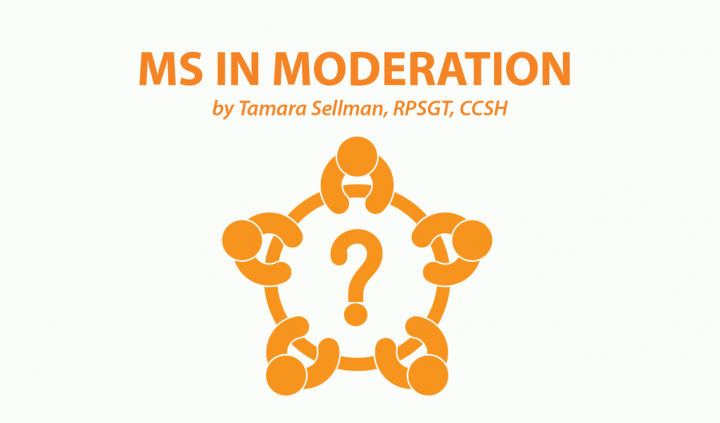Need to Know: What Does MS Progression Mean?

Editor’s note: “Need to Know” is a series inspired by common forum questions and comments from readers. Have a comment or question about MS? Visit our forum. This week’s question is inspired by the forum post “Number, Location, Size of Lesions on MRI Can Predict Progression to MS,” published on Aug. 10, 2018. Please share your concerns, questions, or experiences in the comments below or at the original forum entry.
As a writer, I’m hyperaware of language. Word choices, especially. So, when I was diagnosed with MS, I remember reacting strongly to some words that I’d previously reacted to only with indifference.
For example, the word “progression.”
In my life “BD” (before diagnosis), progression described movement in music, advancement in knowledge or skills, or a sequence of events (such as a progressive dinner).
Back then, these were generally positive, even hopeful concepts.
In life “PD” (post-diagnosis), the word progression means something quite different in the medical wilderness that surrounds a new MS diagnosis.
Progression in MS: Some definitions
To fully understand what progression means for a person with MS, it’s probably best to start with a review of the different kinds of MS.
Why? Because some forms of MS are progressive, while others aren’t.
For instance:
- Clinically isolated syndrome (CIS) and relapsing-remitting MS (RRMS) by definition aren’t progressive forms. With CIS, it’s “one and done” — a single episode with no recurrence. With RRMS, flare-ups generally don’t progress; they come, they go, but the condition itself stays the same and doesn’t worsen.
- As their names suggest, primary progressive MS (PPMS) and secondary progressive MS (SPMS) are progressive forms of MS. In other words, PPMS begins in a progressive form and continues to worsen without remission. Meanwhile, an initial course of RRMS can eventually transition to SPMS, in which worsening symptoms become the norm and periods of remission no longer occur.
In this sense, progression defines MS based on observations about symptoms, relapses, and remissions.
Also, transitions from nonprogressive to progressive forms can still occur.
Is a relapse the same as progression?
A relapse describes symptoms accompanying demyelination. It may or may not signal progression.
If you have a relapse, or flare, and it’s followed by remission, then it’s probably part of your normal RRMS disease course.
During this time, you may notice repeating and established symptoms like optic neuritis, trouble with balance while walking, constant fatigue, or other symptoms that characterize your particular expression of MS.
However, these recurrences of symptoms don’t necessarily signal progression to a new form of MS.
Progression occurs when symptoms never go away, you experience new ones, tests show new damage and potential worsening, or disabling symptoms prompt your doctor to look into upgrading your diagnosis.
Ways to track progression
The primary way doctors help us track our disease course — progressive or not — is with a variety of tests and face-to-face visits to discuss both old and new symptoms.
Magnetic resonance imaging (MRI) offers an objective way to measure progression.
MRI can show old or new lesion activity in the brain and spinal cord as well as identify lesions as either active, inactive, or “smoldering.”
Counting lesions, identifying their locations, and measuring their sizes remain a critical part of the MRI procedure. Observations using this tried-and-true tool not only help to diagnose MS, but also to identify signs of new progression.
Other tests to track, identify, and measure progression include:
- Measuring walking speed
- The Expanded Disability Status Scale, which captures physical disability
- Regular neurological exams, which chronicle changes in symptoms and function
The identification of progression in all types of MS informs the ways doctors identify and take action to treat potential transitions between nonprogressive and progressive forms.
Why tracking progression matters
Here’s another word: disability.
Specifically, the natural course of MS leads to brain shrinkage or atrophy, which causes a host of physical dysfunctions. In other words, disability.
This explains tireless research efforts to delay, slow down, or halt progression. Disability is life-altering, expensive, and can be all-consuming.
For people with nonprogressive MS, protections against disability include disease-modifying therapies (DMTs). If medication can prevent nonprogressive MS from progressing, this can greatly reduce one’s chances for disability.
For those with progressive MS, DMT solutions seek the same outcome. However, progression will still happen. Especially for those with PPMS, the whys, hows, and whens of progression can be unpredictable. Fewer treatments also exist for progressive forms of MS, and they may not always prevent or delay further disability.
So, what’s in a word? Like MS itself, it’s all about context. Let’s just say, the next time I see the word progression, I hope it’s describing a cure for MS, especially for the most progressive types.
***
Note: Multiple Sclerosis News Today is strictly a news and information website about the disease. It does not provide medical advice, diagnosis, or treatment. This content is not intended to be a substitute for professional medical advice, diagnosis, or treatment. Always seek the advice of your physician or other qualified health provider with any questions you may have regarding a medical condition. Never disregard professional medical advice or delay in seeking it because of something you have read on this website. The opinions expressed in this column are not those of Multiple Sclerosis News Today or its parent company, Bionews Services, and are intended to spark discussion about issues pertaining to multiple sclerosis.







Leave a comment
Fill in the required fields to post. Your email address will not be published.